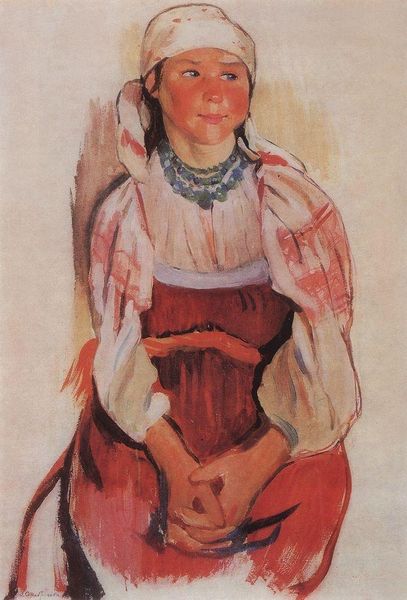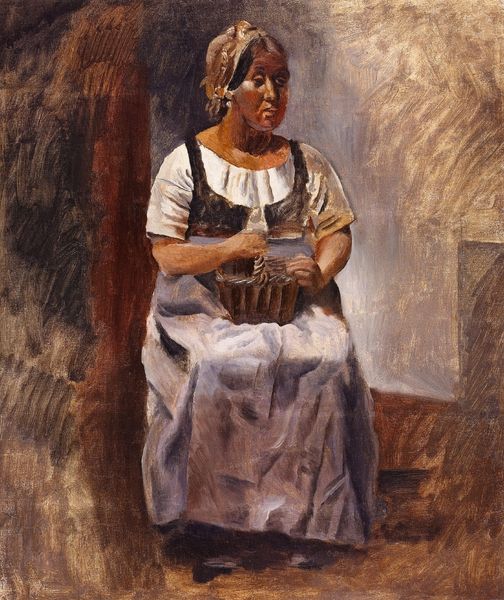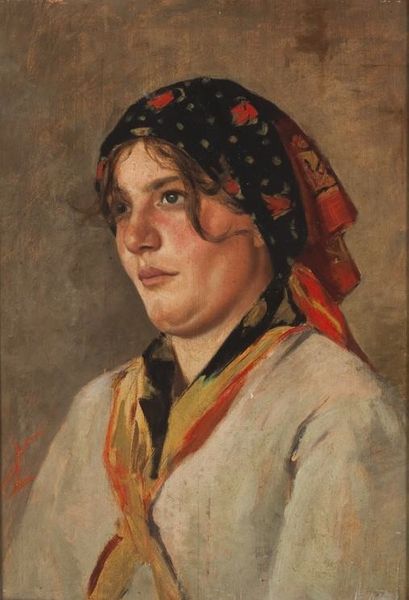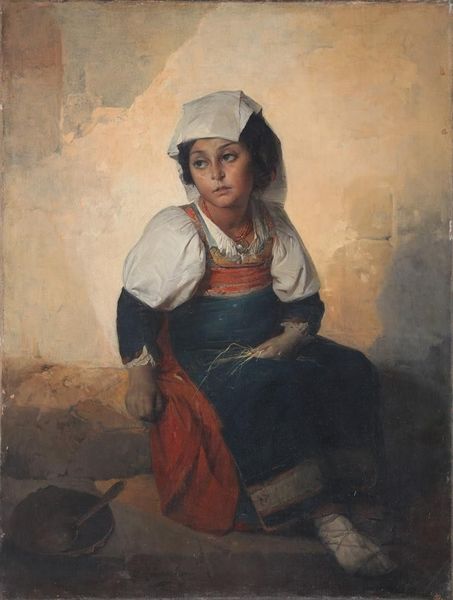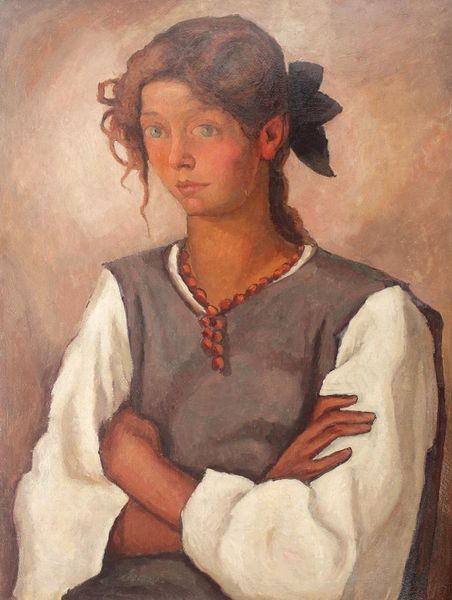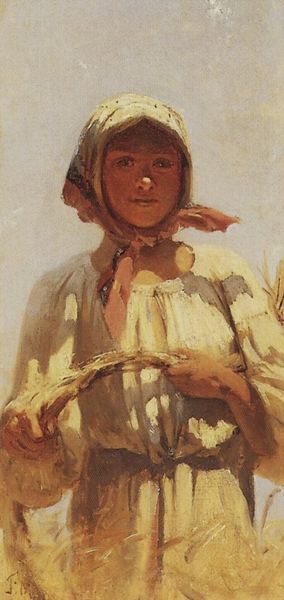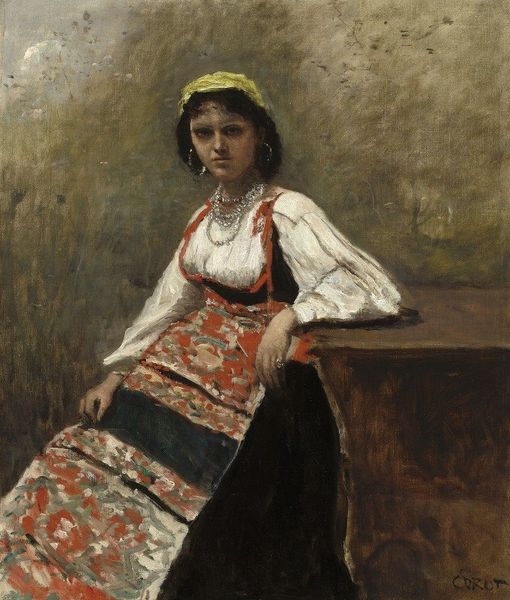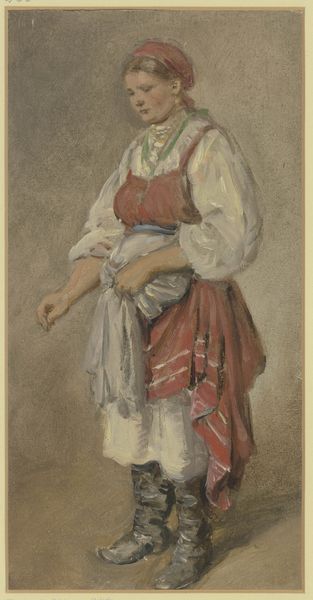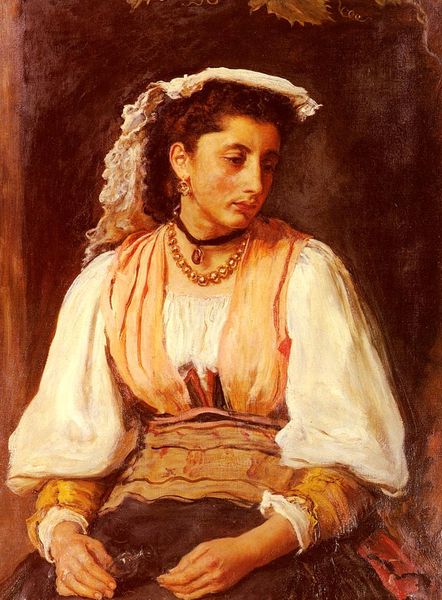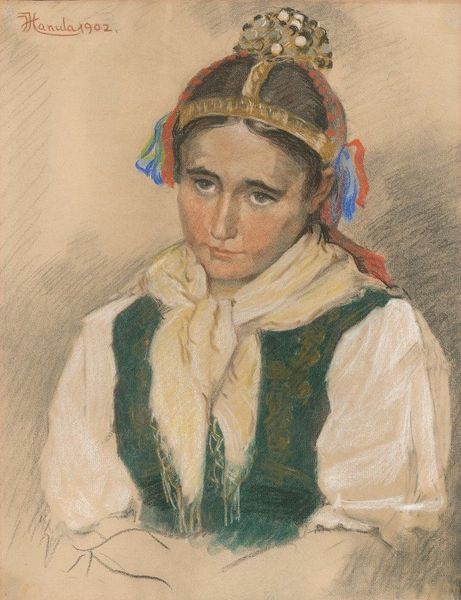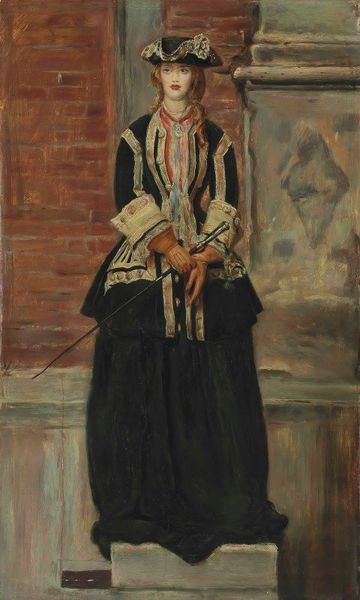
painting, watercolor
#
portrait
#
painting
#
oil painting
#
watercolor
#
russian-avant-garde
#
portrait drawing
#
genre-painting
#
portrait art
#
realism
Copyright: Public domain US
Curator: Standing before us is Zinaida Serebriakova’s “Portrait of a Nurse,” dating back to 1903. Editor: My initial reaction is one of quiet respect. There's a striking dignity to her bearing, despite what seems like a humbleness suggested by the watercolor and visible pencil marks. It evokes a life lived with purpose, perhaps tinged with hardship. Curator: It’s interesting you pick up on that perceived humbleness. We need to consider the burgeoning social realism of the era and the way female roles were viewed within Tsarist Russia, especially within burgeoning public health systems. Serebriakova came from a prominent artistic family, but that doesn't insulate her gaze, or subject, from broader societal constraints. Editor: Absolutely. But let’s look at the visual cues, those repeating floral motifs. Her headscarf is patterned, with red and brown blossoms set against a dark background. They strike me as symbols of resilience and, perhaps surprisingly, a sense of restrained joy within the everyday, battling, so to speak, against a heavier symbolism within her downcast face. What reads as the shadow of suffering actually represents enduring spirit. Curator: I agree about those contrasts. The genre painting aspect here is key. This work predates Serebriakova’s better-known masterpieces depicting peasant life, though one sees an interesting study of similar costuming and hand gestures; it serves as an early exploration into representations of women and labor in rural communities within her artwork. Editor: Notice her hands—clasped tightly. What is she holding back? What unseen battles does she face? It resonates with universal experiences of women across different societies and cultural contexts. The symbol is not merely one of national or economic status but one of deep-seated internal fortitude. Curator: The work’s importance as a historical artifact hinges on it revealing societal shifts in thinking. How Russia began visualizing health workers, the slow change and impact of their contributions—Serebriakova positions a nurse at a pivot point, giving rise to different modes of interpretation and social reflection. Editor: It's a layered narrative indeed; through seemingly simple symbols and brushstrokes, Serebriakova compels us to delve deep into the essence of compassion, resilience, and what it meant to be female, even in seemingly constrained historical conditions. Curator: It certainly gives a fresh understanding to that time period. Editor: I think it beautifully highlights timeless aspects of humanity as well.
Comments
No comments
Be the first to comment and join the conversation on the ultimate creative platform.
